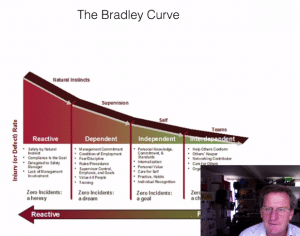 For many years DuPont have perpetuated the myth that they are the “Worlds Safest Company” and a “world-class safety leader”. In the 1940s the company developed the safety philosophy that “all accidents are preventable”. Encouraged by their perception of success, DuPont eventually turned safety consulting, making chemicals and materials on the side. In the 1990s, DuPont began to use the slogan “the goal is “0” ie. zero injuries, zero incidents and a zero harm culture. Many see the Dupont Safety System as the “holy grail” in terms of cultural improvement and injury elimination. But all is not as it seems, they have had their share of serious incidents recently but that is a topic for another blog. See Huston Chronicle’s Article: DuPont’s safety record has slipped in recent years or this 2005 Union Paper: NOT WALKING THE TALK:
For many years DuPont have perpetuated the myth that they are the “Worlds Safest Company” and a “world-class safety leader”. In the 1940s the company developed the safety philosophy that “all accidents are preventable”. Encouraged by their perception of success, DuPont eventually turned safety consulting, making chemicals and materials on the side. In the 1990s, DuPont began to use the slogan “the goal is “0” ie. zero injuries, zero incidents and a zero harm culture. Many see the Dupont Safety System as the “holy grail” in terms of cultural improvement and injury elimination. But all is not as it seems, they have had their share of serious incidents recently but that is a topic for another blog. See Huston Chronicle’s Article: DuPont’s safety record has slipped in recent years or this 2005 Union Paper: NOT WALKING THE TALK:
Recently Rob Long wrote the very popular article “Sexy Curves and The Paradox of Risk” where he discuses the DuPont’s Bradley Curve and other examples of numerically driven, mechanistic safety. He says: “This is how we improve from the problem of ‘natural instincts’ (sounds like the doctrine of original sin) to interdependent ‘world class’ (whatever that means) safety”. Its quite disconcerting if you look at the language and assumptions used in the Bradley Curve as Rob explains in his short and insightful new video below:
Safety Curves and Pyramids
Following the video on Zero Harm (see The Problem with Zero Harm) Rob discusses the ideology of zero embedded in the Bradley Curve and logic of the Bird and Heinrich Pyramid. Rob draws attention to the religious nature of the Bradley curve and its use of religious language to explain ‘natural instincts’ of humans to be naturally unsafe. The ideology and assumptions of the Bradley Curve make disturbing assumptions about what it is to be human. Indeed, the whole zero harm ideology takes on a fundamentalist quest for perfection on rivalled by a religious quest.
The video concludes with a brief discussion on the construct of the pyramid concocted by an insurance salesman in the 1930s without any validation, now used by the risk and safety industries to justify zero and the establishment of intolerant regimes of zero fixated on counting injury statistics as a demonstration of safety. The idea of demonstrating that the evidence of something by the absence of something else is shown to be erroneous and a contributor to toxic organisational culture.
If you would like to know more then contact Rob at www.humandymensions.com
Curves and Pyramids from Human Dymensions on Vimeo.



Do you have any thoughts? Please share them below